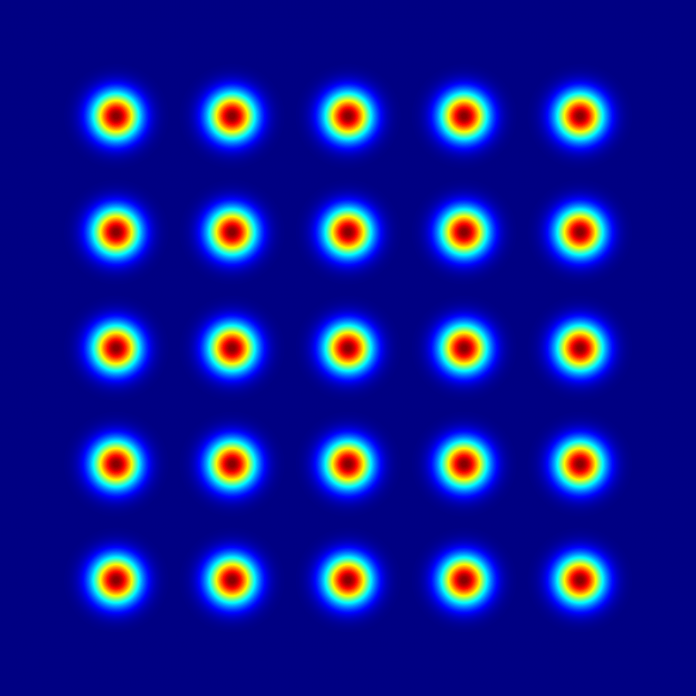A diffractive beam splitter is a type of diffractive optical element, or DOE, whose function is to split an incoming beam into an array of beams with the same characteristics of the source beam. Depending on the context, this type of component can also be known as a dot generator or a fan-out computer generated hologram.
The number of beam replicas and their arrangement in the resulting array can be chosen at will during the design of the diffractive component. Thus, the dots can be arranged in a uniform rectangular grid, in a hexagonal arrangement or in a circular shape, to name some examples. Furthermore, the array does not have to be uniform at all. In fact, it can consist of an array with specific missing dots, a pseudo-random arranged dots, or dots arranged as a target pattern. In any case, the design of the diffractive beam splitter consists of an optimisation algorithm whose output is the discretized phase structure on the DOE.
The typical system embodiment for a diffractive beam splitter consists of an incoming collimated monochromatic beam, like that from a laser, that traverses the diffractive beam splitter. This will create the desired beam array in angular space. The angular separation among the beams is highly wavelength dependent and hence a laser is the best choice to be used with this type of splitter. If a focusing lens is placed after the splitter, the image plane of the lens will consist of the desired beam pattern array.
Diffractive beam splitters can be used in various industrial settings. For example, they can be found in the medical sector for aesthetic laser treatments. They can also be used in applications in which a high-power laser needs to be monitored. For that purpose, a diffractive splitter can create a couple of extra beams that are separated from the original one. This is what they referred to as a beam sampler. A beam splitter can also enable parallel processing and thus increase a systems throughput. Laser welding and dicing can benefit from a beam splitter, for instance.
Another application for diffractive beam splitters can be found in object depth calculations. In this case an array of beams is used to spatially sample an object with an uneven topography. This has proven useful in 3D machine vision. A similar potential application which has received great attention recently is LIDAR systems for vehicles. In this application the diffractive splitter can be designed to provide structured light illumination pattern that will help in the retrieval of distance information.
































